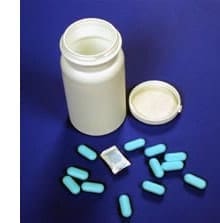Carbon: Odor and Gas Adsorbent Carbon Packs are designed to control objectionable odors and gases within packaged products. Made of activated carbon, Carbon has a highly porous structure and surface area that attracts and bonds with gases and volatile organic molecules. Carbon is capable of adsorbing 50 percent of its weight of carbon tetrachloride (tetrachloromethane) at 25°C. It is recognized as the safest and most efficient way to treat airborne chemicals, gaseous pollutants, fumes and odors. Carbon is activated by a process that opens millions of tiny pores and fissures to boost the material’s adsorbent properties.

What is Activated Carbon?
Activated carbon is an excellent sorbent usually derived from charcoal, thus, it is also called activated charcoal or activated coal. Sometimes the word “active” is substituted for activated.
Activated carbon is a form of carbon processed to have small low-volume pores that increase the surface area available for the adsorption of odors so that just one gram of activated carbon has a surface area in excess of 500 m2. Further chemical treatment can enhance the adsorption properties.
The amount of adsorption is controlled by the material being adsorbed.
Reasons to use Activated Carbon:
· It is widely used by the military and heavy industry for chemical and odor control
· It is economical, as carbon canisters can be refilled
· It is reliable and easy to maintain
· It is safe and non-toxic
· It can be used in any type of environment
· It doesn’t create pollutants
industry Uses
Activated carbon has many industrial uses and there are desiccant bag solutions for all of them. It is used to maintain the freshness of products by adsorbing unwanted smells from packaging boxes, bottles and other containers.
Activated carbon has been widely used for many years to adsorb odors and toxic gases and has been used for a long time in military gas masks. Mil Spec bags are classified as Type I, for general use, Type II, which is non-dusting and Type III for durability.
Desiccant bags comply with JEDEC standards for dry packaging of electronics and semiconductors. They also comply with FDA standards for direct contact with food and drugs.
Typical applications include:
- Electronic components
- Semiconductors
- Machine parts
- Military instruments, armaments
- Pharmaceuticals
- Diagnostic kits
- Motors
- Circuit boards
- Relays and communication devices
- Oceanographic devices
- Document and paper storage
- Museum storage
- Flour, sugar and grains
- Batteries
- Medical equipment
- Inside safes
- Optical devices
Activated Carbon Packets use activated carbon to control objectionable odors and gasses through the process of adsorption. Great for use in nutraceutical packaging or pharmaceutical packaging.
MINIMUM PURCHASE QUANTITIES AND LEAD TIMES MAY APPLY, Please Contact Us For Info
| Name | Price | Buy | hf:tax:product_cat |
|---|---|---|---|
| Activated Carbon Packets - 1 GRAM - 22mm X 48mm - 8000/Carton | $260.15 | desiccants desiccants-hic carbon-packs store-categories root-catalog | |
| Activated Carbon Packets - 5 GRAM - 36mm x 68mm - 2500 Pieces Per Box (Right now there is a 6 weeks lead time) | $330.15 | desiccants desiccants-hic carbon-packs store-categories root-catalog | |
| Activated Carbon Packets, 2 GRAM, 22mm x 62mm, 5000/Carton | $233.35 | desiccants desiccants-hic carbon-packs store-categories root-catalog |
